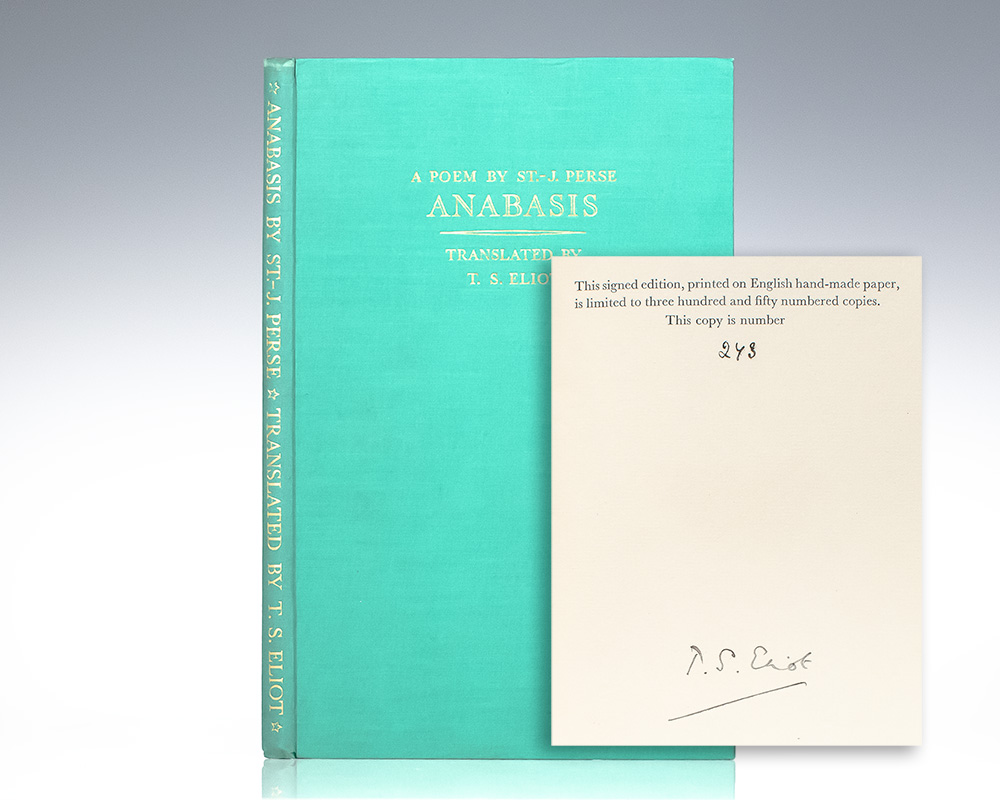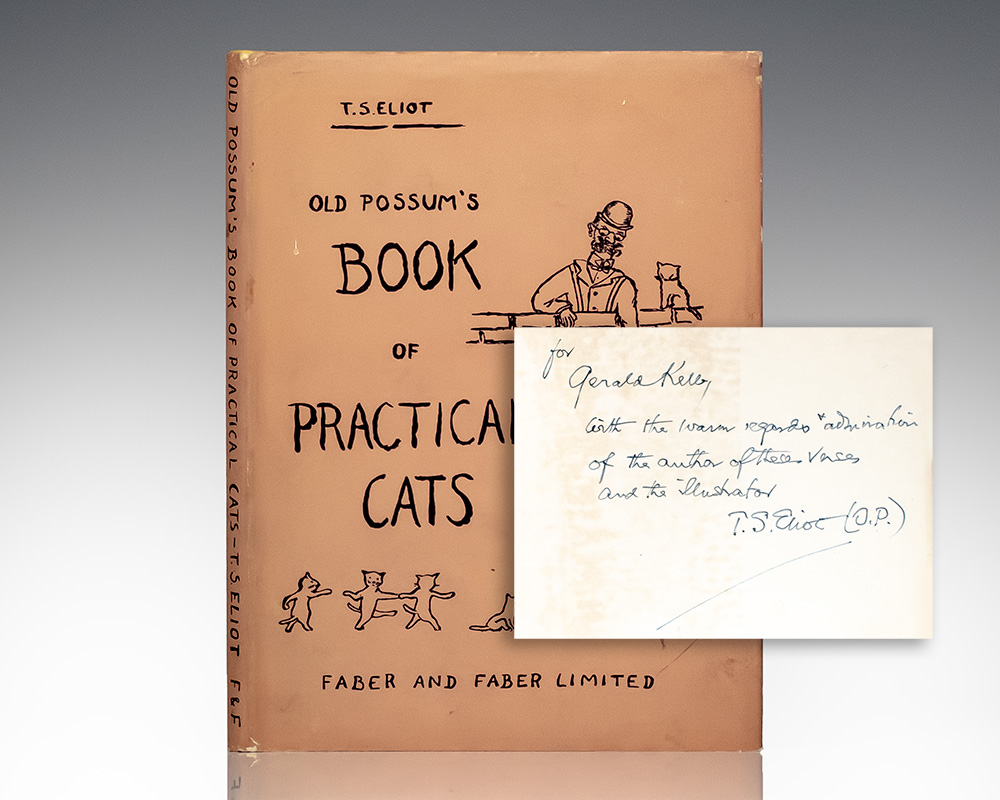The Cocktail Party.
“And if all that is meaningless, I want to be cured Of a craving for something I cannot find And of the shame of never finding it": First edition of The Cocktail Party; Inscribed by T.S. Eliot before Publication to Friend Christopher Sykes
The Cocktail Party.
ELIOT, T.S.
$4,200.00
Item Number: 148139
London: Faber and Faber Ltd, 1950.
First edition of the most popular of Eliot’s seven plays published during his lifetime. First issue with “here” for “her” on page 29, line 1. Octavo, original cloth. Presentation copy, inscribed by the author before publication on the front free endpaper, “To Christopher Sykes With the author’s humble compliments. T.S. Eliot 27.II.50.” The recipient, Christopher Sykes was a fellow writer, who was known for his non-fiction work biography on his friend Evelyn Waugh. Sykes learned Persian studies in 1933 before travelling in Central Asia during 1933–34 with Robert Byron, who later wrote The Road to Oxiana recounting their long expedition in what was then a country almost unexplored by Western Europeans. In the book, Byron states that Sykes was given an order to leave Persia, but that after negotiations had been carried out, he was able to depart freely from the country, via Afghanistan, in Byron’s company. After returning to England, Sykes and Byron wrote a novel together under the name of Richard Waughburton, Innocence and Design, published in 1935. A little later, Sykes and Cyril Connolly planned a book with the title of The Little Voice. In common with other projects of Connolly’s, the book never got beyond the planning stages. Sykes published in 1936 a biography of the German Persianist Wilhelm Wassmuss; he did not, during later years, include this volume in his list of his publications. A memoir of Byron, killed at sea in 1941, was included in Sykes’ best-selling book, Four Studies in Loyalty. Near fine in a near fine dust jacket, bookplate to the front pastedown.
The Cocktail Party was written while Eliot was a visiting scholar at the Institute for Advanced Study in 1948. It was first performed at the Edinburgh Festival in 1949. In 1950 the play had successful runs in London and New York theaters (the Broadway production received the 1950 Tony Award for Best Play.) It focuses on a troubled married couple who, through the intervention of a mysterious stranger, settle their problems and move on with their lives. The play starts out seeming to be a light satire of the traditional British drawing room comedy. As it progresses, however, the work becomes a darker philosophical treatment of human relations. As in many of Eliot's works, the play uses absurdist elements to expose the isolation of the human condition. In another recurring theme of Eliot's plays, the Christian martyrdom of the mistress character is seen as a sacrifice that permits the predominantly secular life of the community to continue.“An authentic modern masterpiece” (New York Post). “Eliot really does portray real-seeming characters. He cuts down his poetic effects to the minimum, and then finally rewards us with most beautiful poetry” (Stephen Spender).










